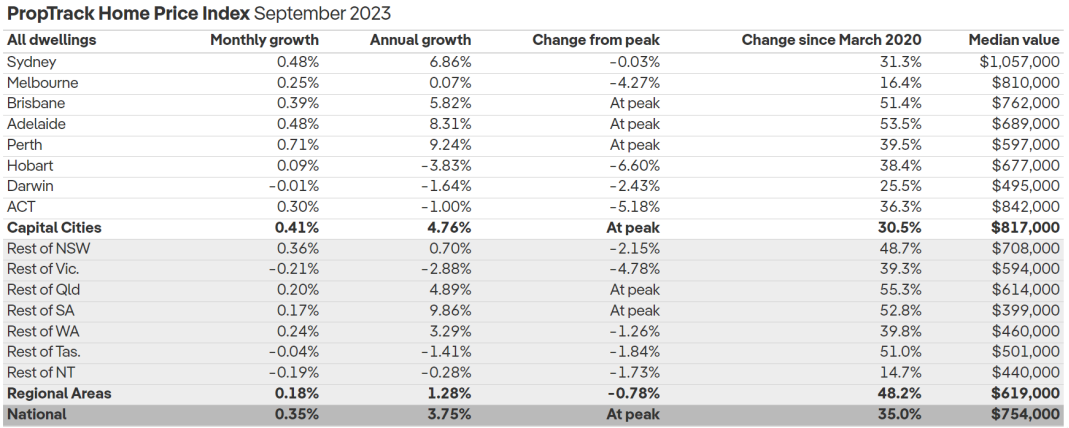PropTrack has released data showing that Australian dwelling values have now fully recovered their RBA interest rate-induced losses, and are now tracking at record highs:

“Home price growth has been driven by record levels of net overseas migration, tight rental markets and a housing shortage”, PropTrack notes.
While a sharp increase in the number of properties hitting the market in Sydney and Melbourne has been improving choice for buyers, strong demand has seen prices continue to lift”.
“Looking ahead, interest rates have likely peaked and population growth is rebounding strongly”.
“Together with a shortage of new home builds, prices are expected to rise. As we head further into spring, more markets are likely to reclaim 2022’s fast falls to set new peaks”, PropTrack warns.

On Sunday evening, I was interviewed by Sky News’ Amanda Stoker in response to PropTrack’s report.
I explained how the nation’s housing crisis is a “direct result” of the Albanese government’s record immigration policy:
“Sadly, the housing crisis is a direct result of the Albanese government’s record immigration policy. The June quarter national accounts showed that Australia’s population grew by 626,000 last financial year off net overseas migration of nearly half a million people”.
“These are numbers we’ve never seen before and they’re effectively what’s driven this rebound in house prices despite the 4% increase in interest rates from the Reserve Bank of Australia”.
“But more importantly, these massive population numbers are driving the rental crisis. They’ve created a record low in rental vacancy rates and obviously driving double digit rental price gains across the capital cities”.
“Sadly, the Albanese government continues to make the housing crisis worse every day by running the most extreme largest immigration program in this nation’s history”.
“The solution [to the lack of housing supply] is actually pretty simple. Common sense would dictate that you merely run the migration system at the same rate as the ability to build housing, build infrastructure, supply water, all those sorts of things. And also at a level that’s commensurate with with the environment’s carrying capacity”.
“Unfortunately, we’re running numbers that are way beyond that and we have pretty much for 20 years. So, I think the solution is really just to dial the numbers back to a level where demand can keep pace with supply”.
“Not just across housing, but infrastructure and all these other things”.
The full seven minute interview can be watched below.
Subscribe to my YouTube channel to stay up to date with my various media appearances.

